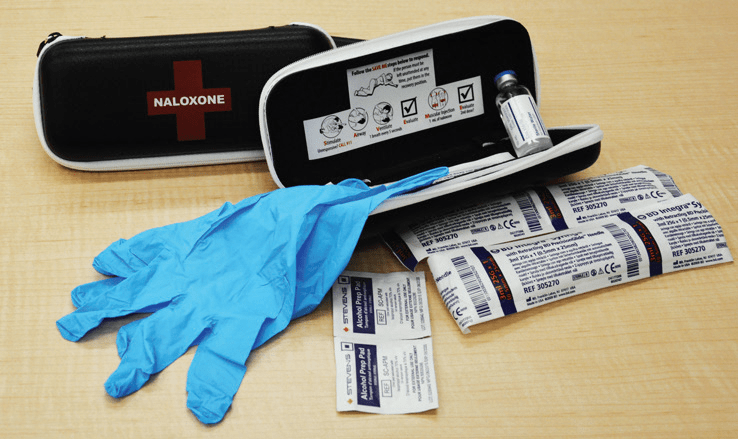(Photo: naloxone kit. credit: https://www.saskhealthauthority.ca)
Over the last few years, there has been a steady rise in overdoses in the northern parts of the province. In 2023 Saskatchewan saw 316 people die as a result of an overdose compared to 293 people in 2022. In 2024, from January up until June, there were 98 overdose-related deaths.
One of the factors contributing to overdoses in the province is that some people who are making and selling these illegal drugs are cutting them with opioids such as fentanyl. It only takes around two milligrams of fentanyl to trigger an overdose during someone’s first use of the drug; that’s equivalent to just six grains of salt.
“Imagine that you buy a juice box, and each juice box has a different amount of sugar inside of it and you never know, you might think ‘I just need one juice box’ and suddenly it’s not sweet at all then you have to drink three juice boxes to get the amount of sugar that you like but then suddenly one of them is just packed full of sugar, suddenly you have way more sugar than you want; and that’s the basic idea here with the lacing (of drugs) because of an inconsistent amount of product or strength in what your taking, suddenly you can be having a lot more than you were expecting and this can result in really harmful effects,” explained medical health officer with the Saskatchewan Health Authority (SHA) in La Ronge, Dr. David Poon.
Over the last five years, the SHA has also seen a rise in crystal meth use in the north, which is often laced with other drugs and chemicals.
“Stimulant medications such as crystal meth have been increasing over the past five years, so I have the data, for example, from 2023 to 2024 in front of me, and we can see that there’s a lot more use of crystal meth and other stimulants included in a separate category as well, so there’s quite a bit of use,” stated Dr. David Poon.
People can overdose on almost any medication if they take more than the recommended dose, but people can overdose from opioids such as fentanyl much easier than other substances due to their potency.
Naloxone is a drug that can reverse the effects of an overdose caused by an opioid. People can get naloxone kits from their local pharmacies, and training on how to use naloxone is offered by various agencies.
If you suspect someone is having an overdose, the National Harm Reduction Coalition states that the best thing to do is try to wake the person up, call 911, administer naloxone if available, check for breathing, and stay with the person.
If you or someone you know is dealing with addictions, the free resources linked below may provide help.
https://www.mygrief.ca (grief)
https://strongestfamilies.com (psychotherapy)
https://my.talkingstick.app (someone to talk to)
https://embracinglifesk.com/embracing-life-app/ (If the overdoses are due to suicidal ideation)
